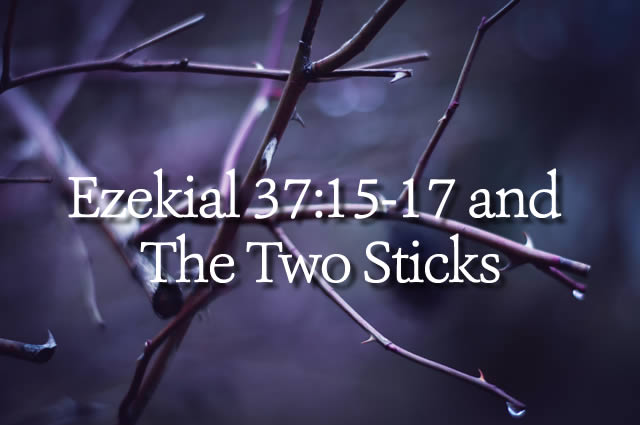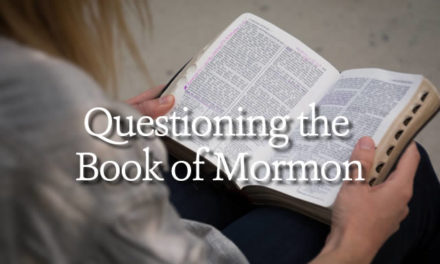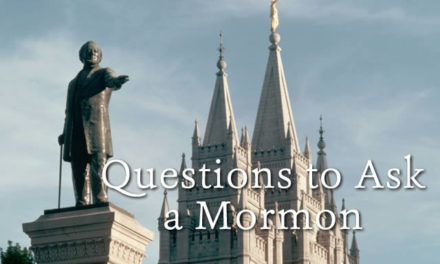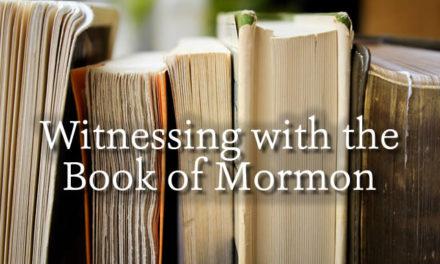“The word of the LORD came again unto me, saying, “Moreover, thou son of man, take thee one stick, and write upon it, For Judah, and for the children of Israel his companions then take another stick, and write upon it, For Joseph, the stick of Ephraim, and for all the house of Israel his companions:And join them one to another into one stick; and they shall become one in thine hand.”
Mormons think this passage in Ezekiel is a prophecy of the Book of Mormon being joined to the Bible as a complete record of God’s dealing with His people in both the Old and New World.
Mormon Apostle, LeGrand Richards, said in his book A Marvelous Work and a Wonder (pages 67,68), “In ancient times it was the custom to write on parchment and roll it on a stick. Therefore, when this command was given, it was the equivalent of directing that two books or records should be kept…. Note that the Lord said he would do this and would make them one in his hand. Now, granting that the Bible is the stick of Judah, where is the stick of Joseph? Can anyone answer?… Until someone can explain where the record of Joseph is, the Book of Mormon stands unrefuted in its claim to be ‘the stick of Joseph’.” The rest of this article will explain it!
There are two ways you can approach the refutation of the Mormon interpretation of Ezekiel 37. One is to say “Let’s look at the Book of Mormon to see if it qualifies as scripture. If it doesn’t then why consider it a fulfillment of Ezekiel 37?” This is a valid approach because the Book of Mormon is riddled with internal inconsistencies, inconsistencies with the Bible, fictional history, absurdities, plagiarism, and post publication changes in the original text of the book Joseph Smith said was “inspired.” However, this approach takes time and requires documentation to be on hand.
The best approach when this text is brought up to a Christian is to say, “Let’s examine the text in its context.” Walter Martin often said, “A text taken out of context is a pretext for error.” This statement is well illustrated in the Mormon interpretation of Ezekiel 37.
It is best to go immediately, without comment, to verses 18 through 28. Verse 18 says, “And when the children of thy people shall speak unto thee, saying, ‘Wilt thou not shew us what thou meanest by these?’” The question of the interpretation of the two sticks is asked of God. The LORD now answers in verses 19 through 28. This is an important point because otherwise a Mormon could say it is your interpretation. Not so here. This is God’s interpretation.
Israel was a divided kingdom. The Southern two tribes of Judah and Benjamin and the remaining Northern ten tribes (represented in this text by Joseph’s son Ephraim) had been divided since the time of Solomon’s sons Jeroboam and Rehoboam. All the tribes were God’s chosen people and He, both here and in other texts, said He would bring them back together as one nation is the land He promised to them (Isaiah 11:11-13).
Verse 19 says, “Thus saith the Lord God; Behold, I will take the stick of Joseph, which is in the hand of Ephraim, and the tribes of Israel his fellows, and will put them with him, even the stick of Judah, and make them one stick, and they shall be one in mine hand.”
Verses 21 and 22 say, “And say unto them, ‘Thus saith the Lord God; Behold, I will take the children of Israel from among the heathen, whither they be gone, and will gather them on every side, and bring them into their own land: And I will make them one nation in the land upon the mountains of Israel,… and they shall no more be two nations, neither shall they be divided into two kingdoms any more at all.” God is talking about nations, not books.
Finally, for those of you who hold to an eschatology that sees the re-establishment of Israel in Palestine as prophesied you can point to the nation of Israel today as the beginning of the fulfillment of Ezekiel’s prophecy.
By David Henke






